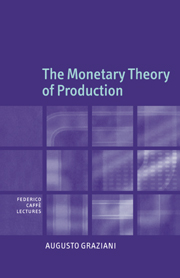Book contents
1 - Introduction
Published online by Cambridge University Press: 03 July 2009
Summary
The theory of the monetary circuit
Over the last twenty years, mostly owing to research carried out by French and Italian scholars, a new formulation of monetary macroeconomics, the so-called ‘Theory of the monetary circuit’, also denominated ‘The circulation approach’ (Deleplace and Nell 1996), has been gaining ground. The basic theoretical tenets of the theory can be synthesised in three main propositions: rigorous distinction between banks and firms, endogenous determination of the money stock, and rejection of the marginal theory of distribution.
The circulation approach in the early Swedish and German literatures
Under a strictly chronological criterion, the first description of a monetary circuit is found in Knut Wicksell's rightly celebrated monograph on Interest and Prices.
Wicksell's analysis strongly influenced a number of authors belonging to the Austrian and German schools, both having a long tradition in the analysis of money and banking. The very term ‘circuit’, introduced in contemporary literature by French authors, reproduces the German Kreislauf, a term used by German writers to describe the circulation of money and of real goods (Schumpeter 1934 [1911], chapter 1). Neisser devoted two works to the analysis of money circulation. The first one (Neisser 1928) gives ample space to the relationships between banks and firms. The second one (Neisser 1931) is specifically devoted to the analysis of circulation among firms and between firms and wage earners.
- Type
- Chapter
- Information
- The Monetary Theory of Production , pp. 1 - 32Publisher: Cambridge University PressPrint publication year: 2003
- 1
- Cited by

